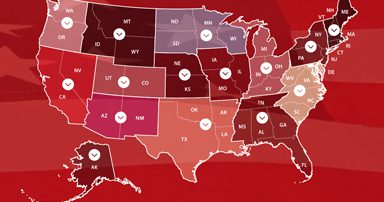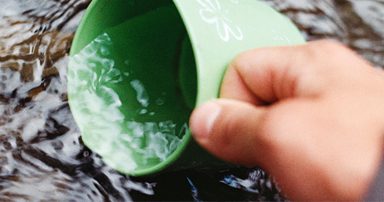FLOODS ARE THE MOST COMMON NATURAL DISASTER IN THE U.S.
Flooding can develop slowly or quickly. Flash floods can come with no warning. Failing to evacuate flooded areas, entering flood waters, or remaining after a flood has passed can result in injury or death.
PREPARE NOW
-
Know your area’s type of flood risk.
-
Sign up for your community’s warning system. The Emergency Alert System (EAS) and National Oceanic and Atmospheric Administration (NOAA) Weather Radio also provide emergency alerts.
-
If flash flooding is a risk in your location, monitor potential signs such as heavy rain.
-
Learn and practice evacuation routes, shelter plans, and flash flood response.
-
Gather supplies in case you have to leave immediately or if services are cut off. Keep in mind each person’s specific needs, including medication. Don’t forget the needs of pets. Obtain extra batteries and charging devices for phones and other critical equipment.
-
Keep important documents in a waterproof container. Create password-protected digital copies.
-
Protect your property. Move valued items to higher levels. Declutter drains and gutters. Install check valves. Consider a sump pump with a battery.
SURVIVE DURING
-
Depending on where you are, and the impact and the warning time of flooding, go to the safe location that you have identified.
-
If told to evacuate, do so immediately. Never drive around barricades. Local responders use them to safely direct traffic out of flooded areas.
-
Listen to EAS, NOAA Weather Radio, or local alerting systems for current emergency information and instructions.
-
Do not walk, swim, or drive through flood waters. Just six inches of fast-moving water can knock you down, and one foot of moving water can sweep your vehicle away.
-
Stay off of bridges over fast-moving water which can be washed away without warning.
-
If your vehicle is trapped in rapidly moving water, stay inside. If water is rising inside the vehicle, seek refuge on the roof.
-
If trapped in a building, go to its highest level. Do not climb into a closed attic. You may become trapped by rising floodwater. Go on the roof only if necessary. Signal for help.
BE SAFE AFTER
-
Listen to authorities for information and instructions.
-
Avoid driving, except in emergencies.
-
Be aware that snakes and other animals may be in your house. Wear heavy gloves and boots during clean up.
-
Avoid wading in floodwater, which can contain dangerous debris and be contaminated.
-
Underground or downed power lines can also electrically charge the water.
-
Use a generator or other gasoline-powered machinery ONLY outdoors and away from windows.
-
Be aware of the risk of electrocution. Do not touch electrical equipment if it is wet or if you are standing in water. If it is safe to do so, turn off the electricity to prevent electric shock.
FOR ALL EMERGENCIES: CORAC runs a HAM radio net and Signal groups. If communication goes out for any length of time, meet outside your local Church at 9 a.m. on Saturday mornings if it is safe to do so. Tell friends at Church now in case you can’t then. CORAC teams will be out looking for people to gather in and work with.






















0 Comments